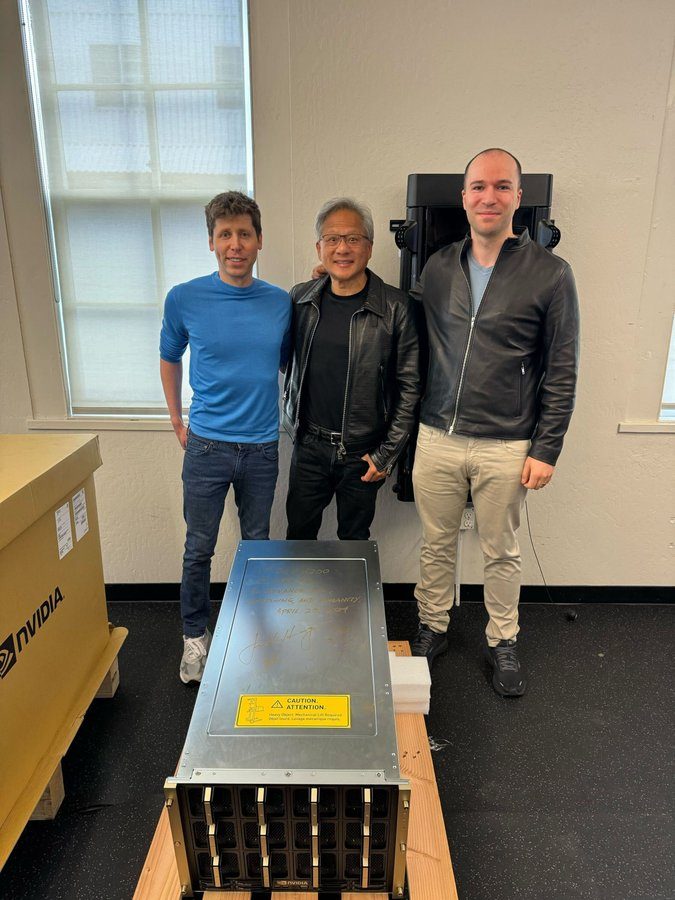The CEO of NVIDIA, Jensen Huang, wanted to seal his company’s commitment to supporting the activities of OpenAI in the field of artificial intelligence. A photo published on Twitter (which we also propose at the beginning and below) sees the number one of NVIDIA alongside Sam Altman and Greg Brockman, respectively CEO and president of OpenAI.
There is a shiny new system in front of them DGX H200, a Tensor Core H200 GPU-based server that represents a notable performance leap over its predecessor. The H200 GPU based on the Hopper architecture integrates 141 GB of memory with a bandwidth of 4.8 TB/s versus the 80 GB and 3.3 TB/s of the H100.
Presenting it as the most advanced solution available today to support workloads related toartificial intelligenceHuang signed the supercomputer just delivered to OpenAI by adding the phrase “to advance AI, computing and all of humanity“.
A photo, that of NVIDIA DGX H200, which brings to mind 2016 and the similar initiative which saw Elon Musk as the protagonist
Just a few weeks ago, the co-founder of OpenAI, Elon Musk, argued with the company, claiming that it had renounced the open vocation under which it was born. On the occasion, Musk published a historic photo, dating back to 2016, which portrayed Huang delivering the first system DGX-1.
8 years later, a new “shot” immortalizes the new delivery of a supercomputer for AI. However, obviously there is no Musk who left slamming the door a long time ago. Among the various companies he founded, the entrepreneur xAI as a direct response to OpenAI.
But business is business. And Huang jots down a message on the powerful DGX H200 that seems to deliberately recall what he wrote in 2016 on the DGX-1. In short, for the CEO of NVIDIA, collaborating with OpenAI remains of fundamental importance.
Time will tell if Musk will also receive an NVIDIA supercomputer to develop the next generation of his generative model Grok.


